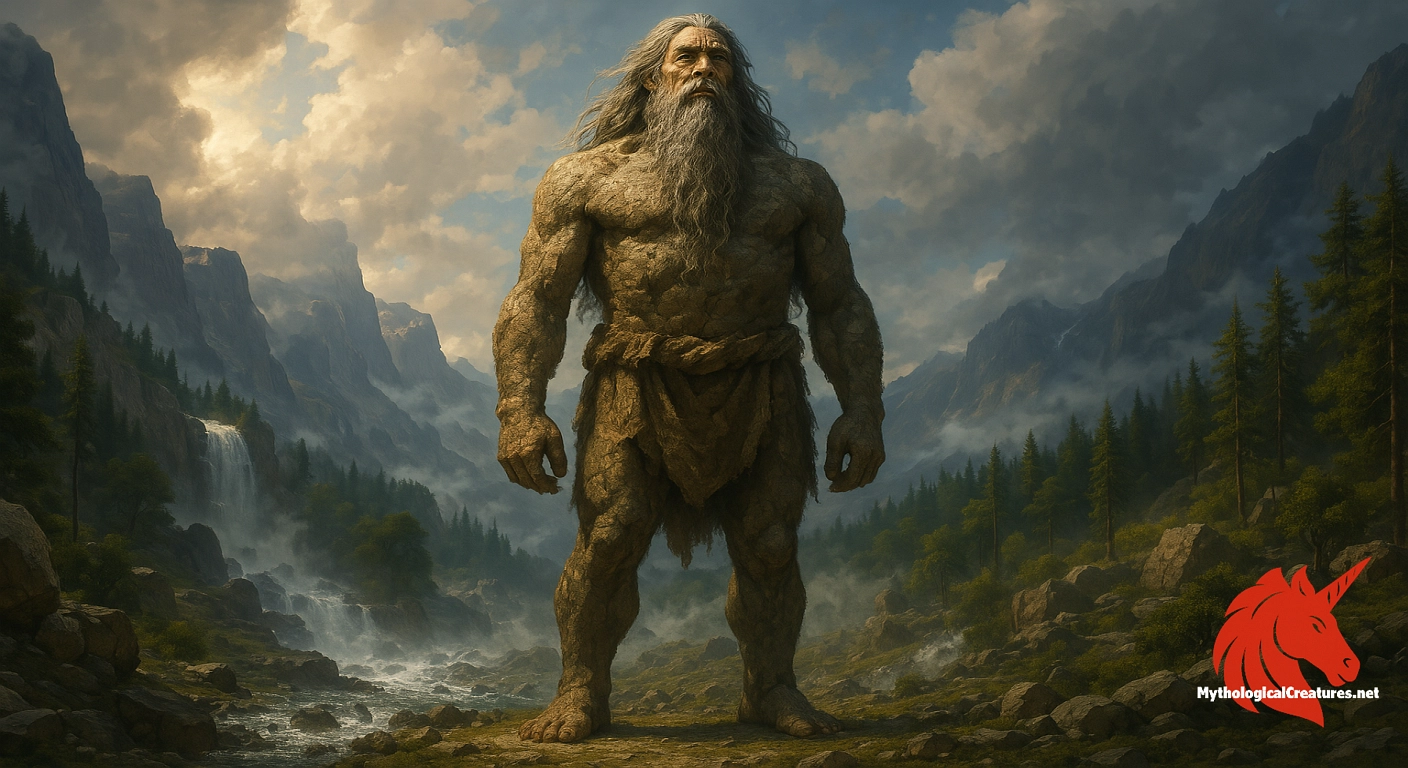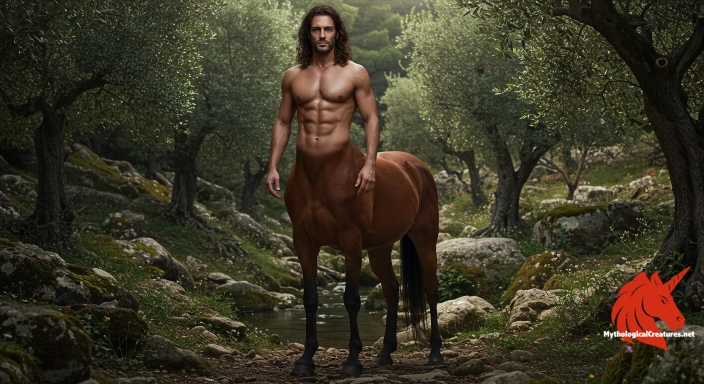Pangu: Pangu is a primordial Chinese creation deity who separated the heavens from the earth.

Pangu
Pangu - Pangu is celebrated as the primordial being whose actions led to the creation of the universe, with his body forming various elements of the natural world.
Origins & First Encounters
Pangu is revered as the primordial architect of the cosmos in Chinese mythology, a being whose emergence from chaos laid the groundwork for a structured universe. His legend unfolds in an era when formless void gradually gave way to order, marking the transition from endless darkness to a vibrant creation. From his inception in the depths of primordial uncertainty, Pangu not only crafted the separation of heaven and earth but also embodied the eternal struggle between chaos and harmony. His myth encapsulates the powerful drive to transform entropy into a balanced world, merging natural phenomena with divine intervention. The narrative is woven into the rich tapestry of early Chinese thought, where mysticism and the laws of nature are interlinked. Pangu’s story, with its transcendent essence, is a testament to the creative force that underpin the natural world. Ancient customs and early intellectual traditions celebrated his contribution as a vital link between the divine and the terrestrial. His legacy is deeply embedded in cultural rituals, inspiring both reverence and artistic exploration across generations. The enduring myth of Pangu continues to echo through the corridors of history, symbolising the eternal journey from chaos to cosmic order.
Source Texts & Tale Variants
Ancient texts and oral traditions provide multiple windows into the story of Pangu, with early Taoist manuscripts offering glimpses of a creation myth imbued with profound symbolism. Variations of his tale appear in fragmented literary records and folklore, each version emphasising different elements of his mighty feat. Some narratives focus on the dramatic breaking of primordial unity to carve out the realms of heaven and earth, while others highlight the gradual, almost mystical unfolding of creation. Over the centuries, the legend has been passed down through both written accounts and vivid storytelling performances that have enriched its intricate details. Poetic inscriptions and regional sagas alike present his life as a metamorphic journey where every moment contributed to the cosmic tapestry. Diverse compilations from historical periods blend both myth and moral allegory, further complicating the details yet enriching the depth of his legacy. As these sources traversed generations, the myth adapted to encompass themes of transformation and renewal, reflecting the dynamic nature of cultural memory. The existence of several story variants underscores the fluidity of myth, revealing how different communities reinterpreted his role in the creation of the natural world. This multiplicity of sources not only perpetuates his legend but also underscores the universal allure of a creation myth that transcends time.
Form & Powers
Pangu is typically portrayed as a towering, colossal figure whose physical manifestation mirrors the enormity of the universe he devised. His robust build and imposing stature serve as visual metaphors for the raw creative power that shaped the world. Artists often depict him with an intense gaze and sinewy form, suggesting that every muscle and feature contributed to the birth of natural elements. His flowing hair and wild beard evoke images of the cosmic winds and untamed energy of the early universe. In many representations, his body is imbued with the colours and textures of the natural world, where each part honours a specific element—mountains, rivers, forests, and skies take form through his might. The narrative of his final transformation, where his flesh, blood, and marrow morph into geographical features, has inspired countless visual allegories. There is an underlying sense of both beauty and harshness in his physical description, emblematic of nature’s capacity to create and destroy. Subtle details, such as the interplay between light and shadow on his weathered features, further enhance his mythic presence. This layered depiction of Pangu binds the human form with the eternal character of the cosmos, making him a figure as enigmatic as the universe itself.
Regional Faces
Regional renditions of the Pangu myth illustrate a fascinating interplay between central mythology and local cultural expressions. In Northern China, for instance, Pangu is often depicted as a rugged giant whose form seamlessly merges with the jagged mountain ranges and desolate plateaux of the landscape. Southern accounts, in contrast, tend to liken his essence to the fluidity of rivers and the gentle undulations of verdant valleys, emphasising a softer, yet equally profound, creative force. In several Daoist communities, the myth has been adapted into ritualistic practices, allowing locals to connect with the divine cosmic order through ceremonies and storytelling. Diverse artistic traditions, from temple carvings to folk paintings, provide unique interpretations of Pangu’s iconic separation of heaven and earth. The manner in which his body is integrated into natural phenomena varies subtly with local geography, often aligning specific landmarks with elements of his legend. In rural settings, oral traditions maintain a rich tapestry of narratives that amplify the intimacy between the figure of Pangu and the natural world. These regional adaptations underscore the way in which a single myth can metamorphose to reflect the distinctive cultural and environmental values of different communities.
Cultural Parallels
Pangu’s myth finds intriguing parallels in creation stories across a multitude of cultures, reflecting a shared human fascination with the emergence of order from chaos. His sweeping act of separating the heavens and the earth resonates with the Norse myth of Ymir, a colossal being whose demise similarly structured the world. Like other cosmic progenitors found in diverse mythologies, his narrative encapsulates the theme of sacrifice, wherein the demise of one entity births the creation of many. Similar traditions in indigenous American and African tales also echo this phenomenon where primordial forces collide to forge a new order. Artists and mythologists have long noted how such comparative analogies shed light on universal motifs of transformation and renewal. The symbolism of transformation from a living being to the elemental components of nature is a recurring motif in global myth, further linking Pangu with other creator figures. This cross-cultural examination reveals that the idea of a singular, monumental act of creation is a ubiquitous narrative tool used to explain the natural world. These cultural connections not only enrich the understanding of Pangu’s myth but also highlight the universality of humanity’s quest to comprehend the origins of existence.
Legacy & Modern Evolution
Over the centuries, the myth of Pangu has undergone a remarkable evolution, transforming from an ancient origin tale into a modern emblem of cosmic creativity. His story has steadily permeated the realms of literature, art, and popular culture, embodying the enduring allure of myth as a means to explain the uncharted mysteries of existence. In modern reinterpretations, Pangu is often celebrated as a symbol of rebirth and the relentless drive for transformation, inspiring contemporary works that blend traditional motifs with innovative expression. Artistic depictions in films, modern sculptures, and graphic novels have reimagined his colossal image, rendering him accessible to a new generation of enthusiasts. Scholars and cultural commentators alike recognise his myth as a metaphor for the continuous cycle of creation and dissolution that governs the natural world. The narrative’s adaptability has allowed it to resonate with audiences both within and beyond Chinese cultural spheres, connecting ancient wisdom with modern scientific discourse. His legacy is not confined solely to mythic texts but manifests in everyday expressions of creativity, from urban murals to digital art. This timeless story continues to invite reinterpretation and debate, ensuring that the figure of Pangu remains a vibrant and dynamic force in the contemporary landscape of myth and culture.
Interesting Fact
An intriguing aspect of Pangu's tale is how his very body became the fabric of the universe, blurring the boundaries between creator and creation in Chinese cosmology.
Quick Creature Info
Features:
Associations:
Our Mythic Legendary Rating:

Also Sometimes Known As:
Habitat:
Supernatural Powers:
Physical Attributes:
Abilities:
Behavior:
Lore:
Related Creatures, Tales or Lore
- NNuwa
- YYmir
- CChaos
References
Discover Another Mythical Legend You May Not Have Heard Of?
Uncover the mysteries of ancient folklore and expand your knowledge of legendary beings from cultures around the world.
Dare to Meet the Perimedes....
Mythical Disclaimer: The images and data on this site are derived from various historical and literary sources, but we have found that many myths often have multiple versions and interpretations across references, sometimes contradictory. As a result, these creature depictions are artistic interpretations—imaginative blends of folklore, legend, and a dash of AI guesswork. Because creature descriptions vary widely, our illustrations and accompanying information represent our best effort to honor mythology while bridging creative gaps. Enjoy these interpretations—just remember, we've done our best to respect the stories and validate available data, but in the realm of mythology, details often shift, imagination leads the way, and nothing is ever set in stone!
Curated by the Mythological Creatures Team (rev. May 2025)
